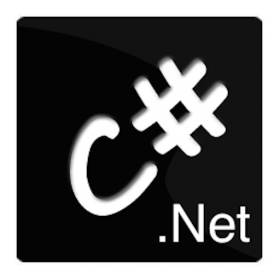
This article introduces the UdpClient class which provides simple methods for sending and receiving connectionless UDP packets in synchronous blocking mode. Because UDP is a connectionless transport protocol, you do not need to establish any remote host connection before sending and receiving data. You just need to establish the default remote host options as follows: Create an instance of the UdpClient class using the remote host name and port number as parameters. Create an instance of the UdpClient class and call the Connect method. You can use any of the send methods provided by UdpClient to send data to the remote device. Then use the Receive method to receive data from the remote host. Tip: If you have specified a default remote host, do not use the host name or IPEndPoint to call the Send method. If you do this, UdpClient will throw an exception. The UdpClient methods also allow you to send and receive multicast packets. Using the JoinMulticastGroup method, you can add 1
1. Summary of key points to note about the UDP server

Introduction: This article introduces the UdpClient class which provides simple methods for sending and receiving connectionless UDP packets in synchronous blocking mode. Because UDP is a connectionless transport protocol, you do not need to establish any remote host connection before sending and receiving data. You just need to establish the default remote host options as follows: Create an instance of the UdpClient class using the remote host name and port number as parameters. Create an instance of the UdpClient class and call the Connect method. You can use any Udp...
2. C# Network Programming Series Articles (8) UdpClient to achieve synchronization UDP server

Introduction: Originality statement Author of this article: Xiaozhuzz This article address http://blog./zhujunxxxxx/article/details/44258719 Please indicate when reprinting Source article series directory C# network programming series of articles (1) Socket implements asynchronous TCP server C# network programming series of articles (2) Socket implements synchronous TCP server C# network programming series of articles (3) TcpListener implements asynchronous TCP server
3. C# Network Programming Series Articles (7) UdpClient implements asynchronous UDP server

##Introduction: Statement of originality Author of this article: Xiaozhuzz This article address is http://blog./zhujunxxxxx/article/details/44258719 Please indicate the source for reprinting. This article introduces the UdpClient class in the synchronous blocking mode for sending and Provides a simple method for receiving connectionless UDP packets. Because UDP is a connectionless transport protocol, you do not need to establish any remote host connection before sending and receiving data. You only need to follow the following methods to establish
4. C# Network Programming Series Articles (2) Socket Implementation Synchronization TCP Server

#Introduction: Originality Statement Author of this article: Xiaozhuzz This article address is http://blog./zhujunxxxxx/article/details/44258719 Please indicate the source for reprinting As I said in the previous blog, I will introduce the use of Socket, TcpListener and UdpClient in c# to implement various synchronous and asynchronous TCP and UDP servers. These are all things that I spent many days summarizing. Yes, in this way I believe that those who are new to c# network programming
[Related Q&A recommendations]:
python - ConnectionRefusedError: [Errno 111] Connection refused
The above is the detailed content of Summary of basic introductory tutorials for UdpClient. For more information, please follow other related articles on the PHP Chinese website!




